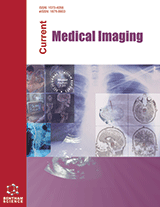
Abstract
Background: Perfusion Weighted Imaging (PWI) has been used to differentiate the solitary metastases from high-grade glioma. However, the CBV value obtained from classical algorithm can be affected by a number of factors. Tissue Similarity Map (TSM) is a new algorithm depending solely on the signal intensity time course but does not require the use of Concentration Time Curve (CTC), which is different from the classical rCBV algorithm.
Objective: The purpose of this study is to investigate the diagnostic utility of TSM based rCBV values in differentiating between high-grade gliomas and solitary metastases.
Methods: The preoperative MR PWI studies of 30 patients with a solitary cerebral neoplasm were retrospectively analyzed. All PWI data were calculated for TSM algorithm with MATLAB 7.6 (Math Works, Natick, MA). The TSM based rCBV (rCBVTSM) were measured in the parenchyma of tumor and peritumoral regions. All specimens were histopathologically categorized as high-grade gliomas or metastases and were correlated with corresponding rCBVTSM values.
Results: All PWI data could be post-processed by using the TSM post-processing software. The differences in the rCBVTSM-T between high-grade gliomas and metastases were not statistically significant (p=0.299). While the rCBVTSM-P of high-grade gliomas was higher than that of metastases (p=0.040). ROC curve analysis showed significant AUC of rCBVTSM-P for differentiating highgrade gliomas from metastases (p=0.020). The rCBVTSM-P threshold of 1.725 was found to be a significant cutoff value for high-grade glioma/metastases prediction with 0.619 sensitivity and 0.889 specificity.
Conclusion: The rCBVTSM-P derived from MR PWI may be helpful in differentiating high-grade gliomas from solitary metastases.
Keywords: TSM, perfusion imaging, cerebral blood volume, glioma, neoplasms metastasis, differentiation diagnosis.
 16
16 4
4 2
2 2
2











